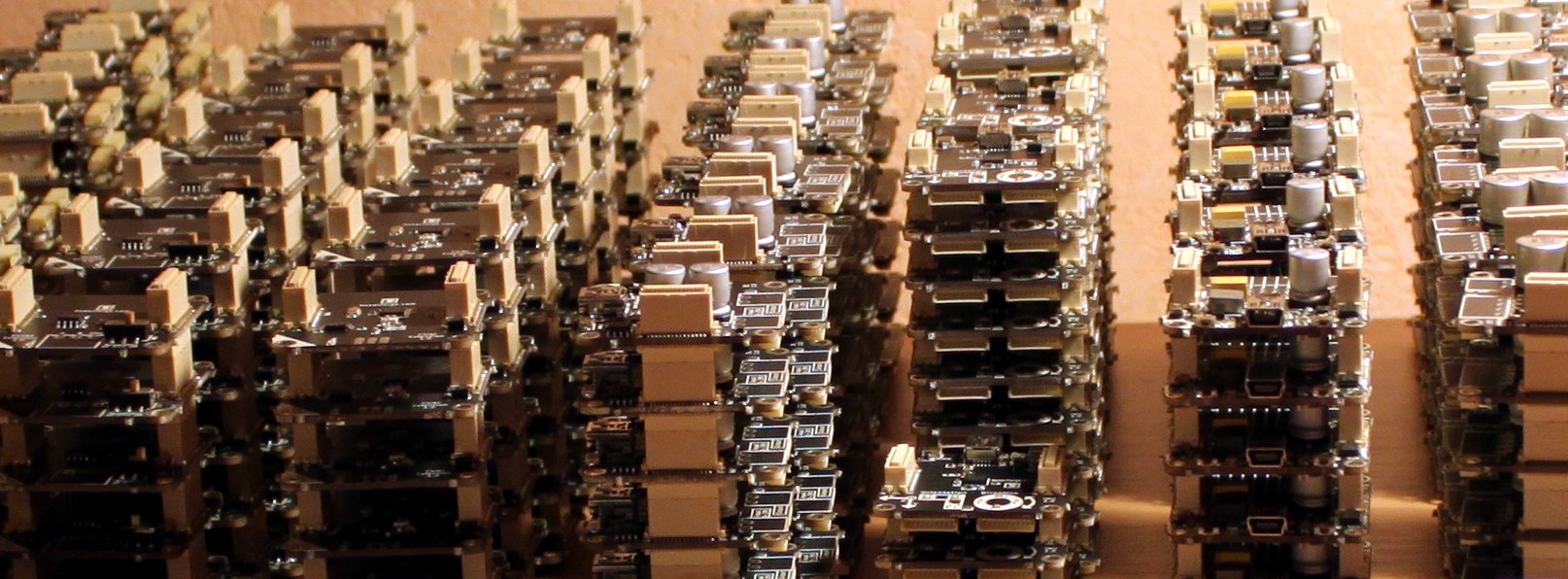Blog
Olaf Lüke - 14 years ago
Help, Master Bricks are out of stock!
Olaf Lüke - 14 years ago
As you have probably already seen, some of our products are sold out. Now the Master Brick is gone too. Since we weren’t sure if there would be any interest at all, we didn’t produce huge quantities.
Availability
Master Bricks will likely be available in the end of January or early February again. The reason for that are the board-to-board connectors. They are especially produced for us and have a long lead time. The fact that Christmas and the new year is so near doesn’t help either. We did already order new ones and this time we ordered really big quantaties.
What the future holds
To see the whole thing in a positive light: We will be able to use the time until February to implement many of the anounced features and many of your suggestions. This includes The wireless extension, the IMU, the MacOS and iOS port and more. In addition, we now have a chance to make improvements in the hardware design or possibly apply bug fixes.
Orders
All of the modules that are sold be us, were made by a circuit board assembler without the THT components (THT components are pushed through the circuit board). Before we went online, we made a small portion of these ready to be send out (we thought it would be enough for at least a month). To give a small overview about what has to be done:
Our modules come in a panel (i.e. a bunch of them are beeing hold together by small bridges). They must be broken out and the sharp remains of the bridges are must be removed. After that we place the THT parts and the circuit boards get cleand and dried. Then we flash the UID and the firmware. Before the hardware is send out, we make a small test of the most important functions. The latter is unfortunately necessary since our circuit board assembler did not deliver 100% quality and we don’t want to ship broken or half functioning products.
Nevertheless, we have now mastered the process as described above and we can now definitely process the accumulated orders in the next days.

We have been overrun!
Olaf Lüke - 14 years ago
After the German news site golem wrote an article about us, we experienced an unexpected rush of visitors. We got more questions and orders than expected for the first months.
All the positive feedback was overwhelming.
On the downside, we are currently not able to handle all of the questions and orders as fast as we would want to. If you ordered something, please be a little bit patient. It will probably take us up to monday or tuesday to send out your order.
To clear up one misunderstanding that we have seen repeatedly: It is _not_ possible to upload C#, Java or Python code directly onto Bricks. With the Software that is currently available, it is only possible to control Bricks and Bricklets from a PC. An API on the Bricks (called “On Device Programming Interface” in the documentation) is scheduled for the distant future.
Introduction video online
Olaf Lüke - 14 years ago
It should show some applications of our products and give a short explanation of the usage.
We are curious to read your comments.
We are online!
Olaf Lüke - 14 years, 2 months ago
After a long time of development we finally managed it and made tinkerforge.com public. We are very excited to see what follows next.
The first idea for Tinkerforge was born in 2008 where we were involved in the development of autonomous soccer robots. The handling of the hardware for these roboters was so hard, that the actual autonomous part of the development was neglected and the project was a failure, we didn’t win one match. After these experiences we were looking for hardware modules which are easily PC controllable, programmable with different programming languages and open source. After some research we could not find adequate hardware.
This idea laid the foundation for what would later become Tinkerforge. Together with the University of Paderborn we refined the idea and developed an application for the EXIST-Gründerstipendium, a grant for innovative startups, offered by the ESF and the European Union. To our surprise we won the grant with our idea of easy to use open source hardware. With this grant we were able to create the first prototypes.
Now, nearly two years later, after innumerable iterations of different board sizes, connector types and circuit board layouts we are proud to announce the first boards of our modular hardware family. To stay true to the open source development philosophy “release early, release often” we are going online with only a small subset of planned boards and available programming languages. We hope to receive early feedback that can be used to steer the further development in the right direction.
Currently it is possible to natively use C, C++, C#, Java and Python to control DC motors, stepper motors, servos, LCD character displays, relays and to sense ambient light, current, distance, humidity, temperature, voltage and to receive input from potis, joysticks as well as general purpose inputs.
This specific subset of modules and programming languages already is enough to tinker with and build a wide variety of projects. Nevertheless, support for many more programming languages is planned and we haven’t released all hardware modules of our first production yet. So stay tuned!

